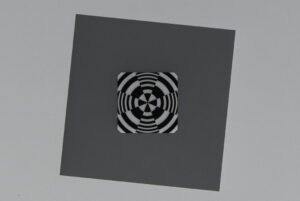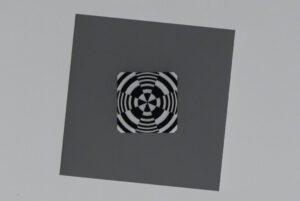Landscape photographers often deal with the dilemma of choosing between different types and brands of neutral density and graduated neutral density filters for use in high-contrast situations such as sunrise and sunset, where their cameras might not have enough dynamic range to be able to capture the entire scene. While we are not going to go over each and every brand to see which one performs better, we do want to show the difference in sharpness between glass and resin filters. For this particular test, we used three 0.6 (2 stop) filters from three different manufacturers – NiSi (glass filter), Lee (resin) and HiTech (resin). The latter two are probably the two brands that are used the most among photographers in the field.
For the sharpness test, we used the Nikon 105mm f/1.4E ED, which we are in the process of evaluating for an upcoming review. The lens was mounted on the Nikon D810 and shot in Mirror Lock Up mode, with EFCS (Electronic Front Curtain Shutter) enabled, as detailed in our how to reduce camera shake on a tripod article. While the numbers are not yet final (only one sample was tested with a high-resolution chart at a very close distance, which can skew mid-frame and corner numbers), you can see that the lens looks absolutely amazing, almost Zeiss Otus-like in terms of center sharpness – definitely one of the sharpest Nikon prime lenses we have ever tested.
We stopped down the lens to f/5.6 to yield maximum sharpness (although MTF numbers at f/4 look even more impressive in some cases) and we used a few different focusing techniques to yield the best possible performance without any filters, while a NiSi filter holder was already attached to the lens. Once maximum resolution numbers were achieved, we mounted one filter at a time, without touching the focusing ring.
2 Stop GND Filters – Glass vs Resin
Below are the results from Imatest software, showcasing MTF numbers for the 2 stop GND filters:
As you can see, there is no difference between using a lens with or without a glass filter. And we have shown before in our clear filter tests, if one uses high quality glass in front of a filter, there is no impact on the lens’ resolving power. So it looks like if one uses glass filters similar to the ones from NiSi, one can get maximum sharpness from the camera + lens setup.
At the same time, take a look at what happens when a resin filter is mounted on the camera. I have been using Lee and HiTech filters for years and previously, I never really noticed much loss of sharpness in my images when using lower resolution cameras. After I started using high-resolution cameras such as the Nikon D810, Sony A7R II and Canon 5DS R, I did start noticing differences in sharpness in my images. Not to the point that would make me not want to use filters, but definitely to the point where I started wondering if perhaps my filters needed to be replaced.
The graphs above show a very typical situation when using resin filters – there is a definite and visible drop in sharpness on high-resolution cameras, even at 36 MP. As you can see, Lee’s two stop 0.6 GND (Graduated Neutral Density) filter had a pretty dramatic drop of sharpness, almost 17.5% lower in center sharpness compared to not using a filter and around 15.8% lower in center sharpness compared to NiSi’s glass filter.
Actually, the numbers were even lower when I initially mounted resin filters. Due to changes in optical path when using resin filters, I actually had to refocus my setup and see if I can get better numbers. I was able to get higher numbers in the center of the frame and due to the change of plane of focus, the change did affect mid-frame numbers as well, which is why they show up a little higher in comparison to not using a filter at all.
After testing out my Lee filter, I decided to mount HiTech’s 0.6 GND as well and see what it would yield. As you can see, although its performance looks a tad better, overall, it is really not much different compared to Lee. Center performance drops by roughly 15%, which is certainly not a small number – that’s practically worse than using a cheap circular filter in front of your lens.
Now you might be wondering, can these differences be seen in images? Let’s take a look at two crops taken from the above-mentioned tests:
Keep in mind that these tests were performed with a 36 MP camera. If I were to show you difference with 42 or 50 MP cameras, the differences would be even more apparent. Please don’t try to view these images on a small mobile device / tablet, or a large super high-resolution screen, since pixels would be packed too closely together and you would never see any differences. 15% does not look like a big number for sure, but if you look closely at edge detail, the differences are definitely there. Now if those differences are too small for you to care about, then by all means, forget about the existence of this article! However, if you do want the best edge detail your camera can provide for landscape or architectural photography needs, you might want to re-evaluate your setup and potentially look into getting resin filters replaced with glass filters.
10 Stop ND Filters – Glass vs Resin
We also decided to run another test to compare two 10 Stop ND filters from NiSi (glass) and HiTech (resin). Aside from serious color cast issues pointed out in our NiSi Filter System review, we saw a pretty dramatic drop in sharpness when comparing NiSi to HiTech filters. Take a look at the MTF numbers below:
As you can see, the NiSi 10 stop ND filter performed really well compared to the HiTech resin filter, which actually caused quite a bit of damage – practically a 30% drop in sharpness! So keep this in mind if you want to do long exposure photography. Looks like glass is the way to go not only if you want to preserve original colors (no color cast), but also if you want to keep the resolving power of your lens.
Summary
Resin filters definitely have their own advantages – they handle great in the field and if you drop them on a hard surface, they do not break like glass does. They don’t shatter under pressure, since they have the flexibility to bend. However, they are quite prone to scratches and even moderate use of resin filters can introduce small scratches all over the filter. While scratches don’t do additional damage to your images in terms of sharpness, they certainly can reduce contrast and potentially introduce more artifacts to your images when shooting against bright sources of light (in the form of ghosting and flare).
In comparison, glass filters are obviously superior in sharpness and they are less prone to scratching. However, they do require better handling in the field, so you must be able to provide good protection for them not only while transporting, but also while using. If you drop a glass filter, unless it lands on grass, you will have to look for a replacement.
Personally, I am planning to start using glass filters from now on. However, in case I do lose a filter in the field, I am planning to bring my Lee filters along, just in case 🙂
What types of filters do you personally use? Resin or glass? Have you tried both to see what is practical in the field? Would love to hear your thoughts in the comments section below!
The post Glass vs Resin Filters – Are There Any Differences in Sharpness? appeared first on Photography Life.








